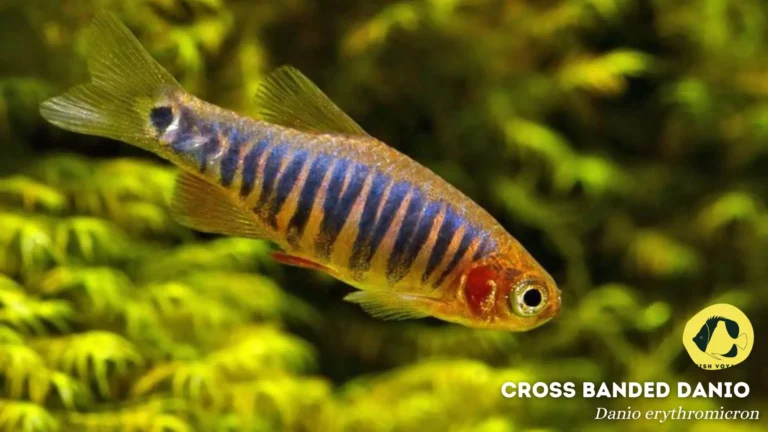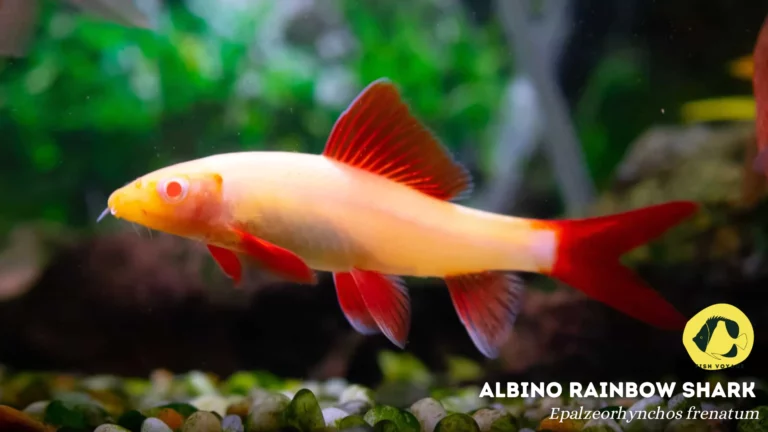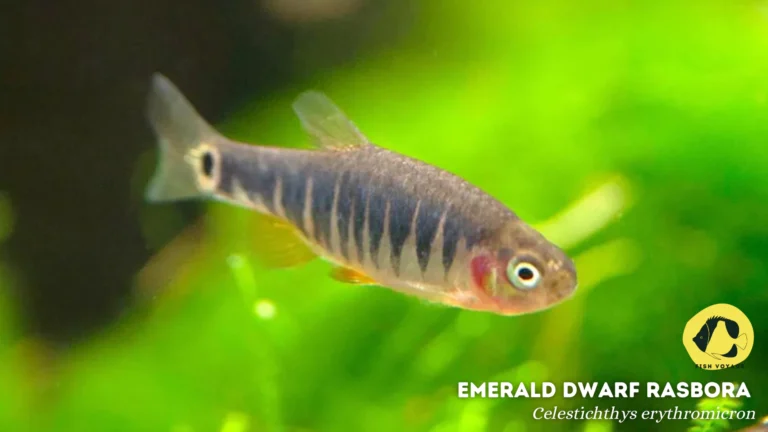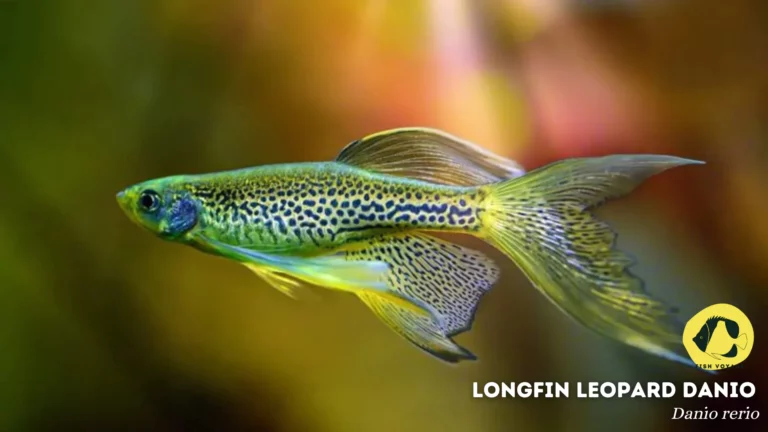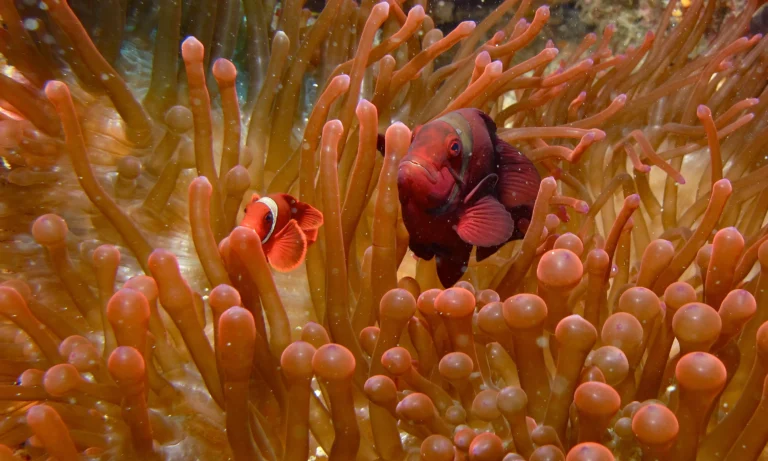The Guide to Microrasbora Rubescens Tank Mates

Microrasbora Rubescens, commonly known as the Red Dwarf Rasbora, is a captivating and vibrant species that has found its way into many aquariums, captivating enthusiasts with its striking coloration and lively demeanor. With its petite size and unique red hues, the Microrasbora Rubescens has become a popular choice among aquarium hobbyists seeking to create visually stunning aquatic environments.
Choosing suitable tank mates for Microrasbora Rubescens is a critical aspect of responsible fishkeeping. Ensuring compatibility in a community tank is not only beneficial for the well-being of the Red Dwarf Rasbora but also contributes to the overall harmony and balance within the aquarium ecosystem. The right companions can enhance the social dynamics of the tank, creating a captivating and thriving underwater world.
The purpose of this blog post is to guide and inform aquarists about the characteristics of Microrasbora Rubescens, the ideal tank setup, and most importantly, the selection of compatible tank mates. By delving into the intricacies of harmonious cohabitation, we aim to empower aquarium enthusiasts with the knowledge needed to create a thriving aquatic community centered around the captivating Red Dwarf Rasbora.
Characteristics of Microrasbora Rubescens
Size and Physical Features
- Petite Stature: Microrasbora Rubescens boasts a diminutive size, typically reaching around 0.8 to 1.2 inches, making it an ideal choice for smaller aquarium setups.
- Striking Coloration: Recognized for its vibrant hues, particularly the captivating red tones that adorn its streamlined body, the Red Dwarf Rasbora adds a splash of color to any tank.
- Distinctive Markings: The species showcases subtle yet distinct markings, including a dark lateral line that accentuates its overall appearance.

Behavioral Traits
- Active Swimmers: Microrasbora Rubescens is known for its energetic and playful swimming patterns, bringing vitality to the aquarium environment.
- Peaceful Nature: Exhibiting a calm and non-aggressive demeanor, this species thrives in community settings and coexists harmoniously with compatible tank mates.
- Schooling Instinct: Red Dwarf Rasboras exhibit a natural inclination to form schools, emphasizing the need for companionship in their environment.
Preferred Water Conditions
- Temperature Range: Microrasbora Rubescens thrives in tropical temperatures ranging from 72 to 79 degrees Fahrenheit, providing an optimal and stable environment.
- pH and Hardness: Preferring slightly acidic to neutral pH levels (6.0-7.0) and soft to moderately hard water, replicating its native habitats in Southeast Asia.
- Aquascape Considerations: Incorporating live plants and gentle water flow contributes to the well-being of Microrasbora Rubescens, mimicking its natural surroundings.
Ideal Tank Setup for Microrasbora Rubescens
Aquarium Size and Dimensions
- Compact Habitat: Optimal for smaller spaces, a tank of at least 10 gallons is suitable for a community of Microrasbora Rubescens, allowing ample room for swimming and social interactions.
- Horizontal Space: Consider tanks with longer dimensions to accommodate the species’ active swimming patterns, promoting a stress-free environment.
Water Parameters
- Tropical Temperature: Maintain a consistent temperature between 72 to 79 degrees Fahrenheit, ensuring a warm and stable environment for the Red Dwarf Rasbora.
- pH Levels: Maintain slightly acidic to neutral pH levels ranging from 6.0 to 7.0, replicating the species’ native Southeast Asian habitats.
- Water Hardness: Provide soft to moderately hard water conditions, mimicking the preferences of Microrasbora Rubescens.
Recommended Decor and Plants
- Aquatic Flora: Incorporate live plants such as Java Moss, Anubias, and Hornwort, creating natural hiding spots and contributing to water quality.
- Subdued Lighting: Red Dwarf Rasboras appreciate subdued lighting conditions, achieved through floating plants or adjustable aquarium lights, replicating their native habitats.
- Gentle Water Flow: Mimic the slow-flowing streams of Southeast Asia by incorporating gentle water flow in the tank, ensuring the comfort of Microrasbora Rubescens.
Importance of Choosing Suitable Tank Mates
Minimizing Aggression and Stress
- Social Harmony: Opting for peaceful tank mates helps create a harmonious community, reducing the likelihood of territorial disputes and aggression.
- Stress Reduction: Compatible companions contribute to a stress-free environment for Microrasbora Rubescens, ensuring they display their natural behaviors and vibrant colors.
Promoting a Balanced Ecosystem
- Ecological Balance: Selecting tank mates that complement the Red Dwarf Rasbora’s needs fosters a balanced and sustainable ecosystem within the aquarium.
- Algae Control: Certain species, like compatible shrimp or bottom-dwelling fish, can aid in natural algae control, promoting a healthier aquatic environment.
Enhancing the Well-being of Microrasbora Rubescens
- Natural Behavior Expression: Suitable tank mates encourage Microrasbora Rubescens to exhibit natural schooling behaviors, promoting mental stimulation and overall well-being.
- Disease Prevention: A well-balanced community reduces stress-related vulnerabilities, contributing to the overall health and disease resistance of Microrasbora Rubescens.
Top 5 Compatible Tank Mates
Neon Tetras (Paracheirodon innesi)
- Size: Similar in size to Microrasbora Rubescens, Neon Tetras add vibrant colors and share the same preference for soft, slightly acidic water.
- Behavior: Both species are peaceful, creating a visually striking and tranquil schooling dynamic in the aquarium.

Dwarf Corydoras (Corydoras habrosus)
- Size: Petite and unobtrusive, Dwarf Corydoras are an excellent choice for the bottom of the tank, complementing the mid-to-upper level activity of Microrasbora Rubescens.
- Behavior: These catfish are peaceful scavengers, promoting a clean and well-maintained substrate.
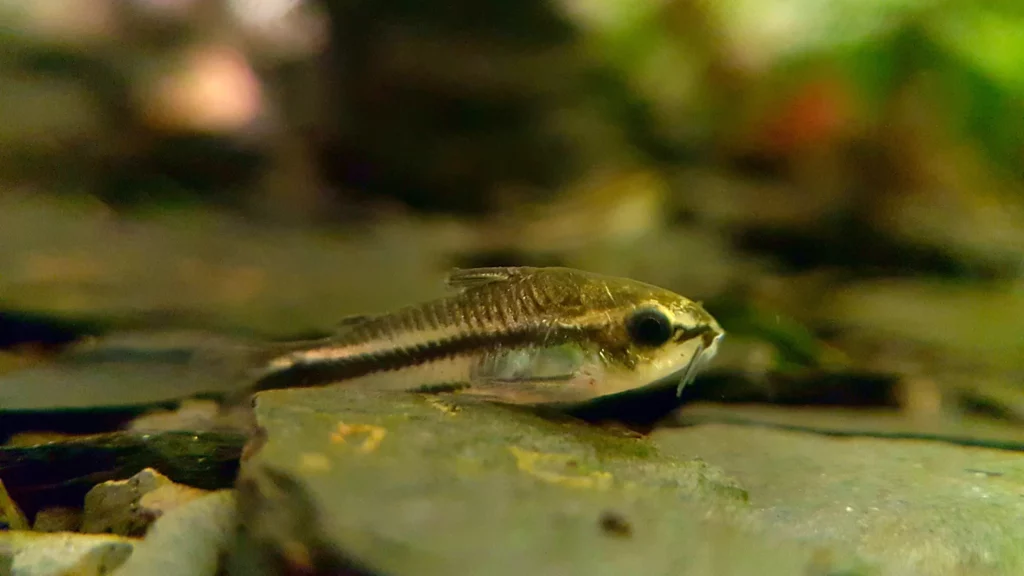
Cherry Shrimp (Neocaridina davidi)
- Size: Small and non-intrusive, Cherry Shrimp add a delightful pop of color to the tank without competing for space with Microrasbora Rubescens.
- Behavior: Shrimp are excellent algae eaters and contribute to the overall cleanliness of the aquarium.

Celestial Pearl Danio (Danio margaritatus)
- Size: Similar in size to Microrasbora Rubescens, Celestial Pearl Danios are known for their striking appearance and peaceful nature.
- Behavior: Both species share a preference for calm, well-planted aquariums, creating a serene and visually appealing underwater landscape.
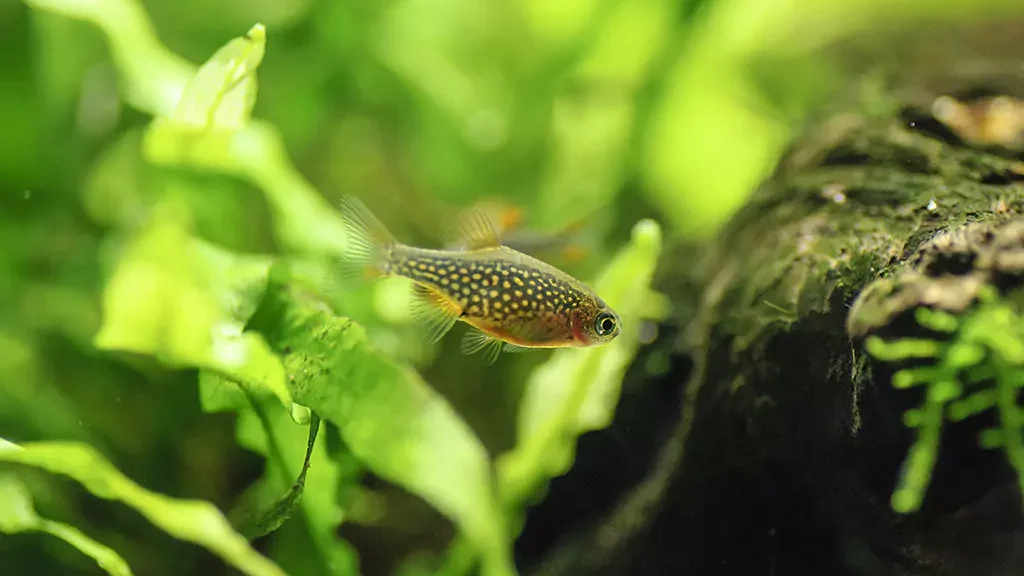
Otocinclus Catfish (Otocinclus affinis)
- Size: Small and non-aggressive, Otocinclus Catfish are well-suited for smaller tanks, coexisting peacefully with Microrasbora Rubescens.
- Behavior: These catfish are efficient algae eaters, contributing to a healthy and balanced aquarium ecosystem.

These compatible tank mates ensure a visually appealing and well-balanced community, enhancing the overall aquarium experience while meeting the specific needs of Microrasbora Rubescens. When introducing new species, it’s essential to monitor their interactions to ensure continued harmony in the tank.
Top 5 Incompatible Tank Mates
Aggressive Betta Fish (Betta splendens)
- Aggression: Betta fish are known for their territorial nature and may engage in aggressive behavior, posing a threat to the peaceful disposition of Microrasbora Rubescens.
- Size Difference: Betta fish may mistake the smaller Red Dwarf Rasboras for potential rivals, leading to confrontations.
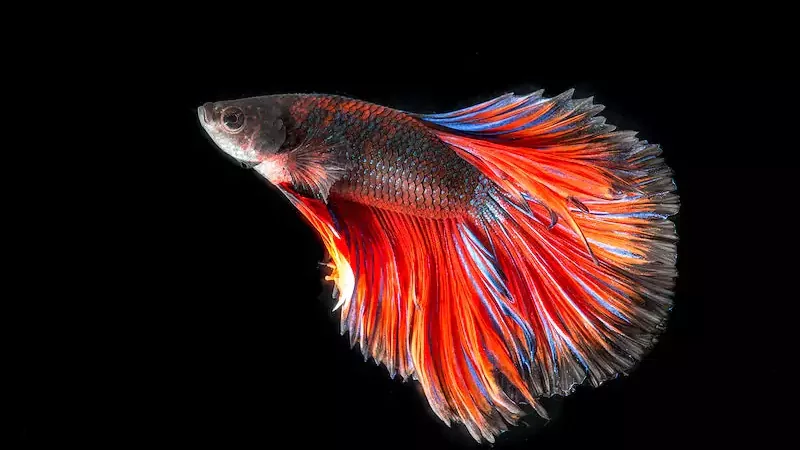
Cichlids (Various Species)
- Aggression: Many cichlid species are territorially aggressive, making them unsuitable companions for the docile Microrasbora Rubescens.
- Size Difference: Cichlids often grow larger than Microrasbora Rubescens, posing a risk of predation or intimidation.
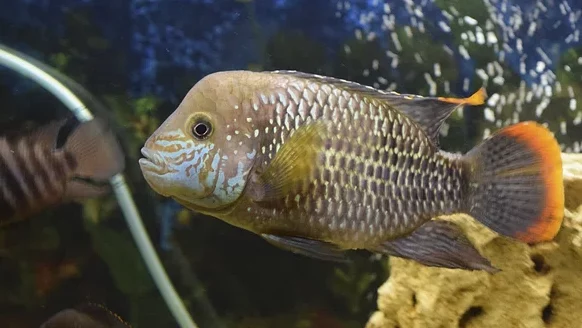
Barbs (Various Species)
- Aggression: Certain barb species can exhibit aggressive behaviors, especially during breeding seasons, causing stress to the more placid Red Dwarf Rasboras.
- Nipping Behavior: Some barbs are known for their fin-nipping tendencies, potentially targeting the fins of Microrasbora Rubescens.
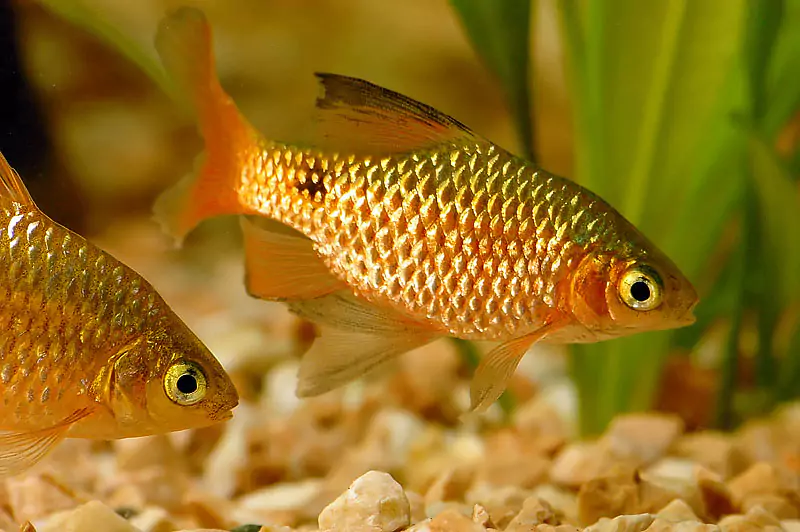
Large and Aggressive Tetras (e.g., Serpae Tetra)
- Aggression: Larger tetra species, like Serpae Tetras, can display nipping behavior and territorial aggression, disrupting the peaceful dynamics of the community.
- Size Difference: Microrasbora Rubescens may be intimidated or harassed by the larger and more assertive tetra species.
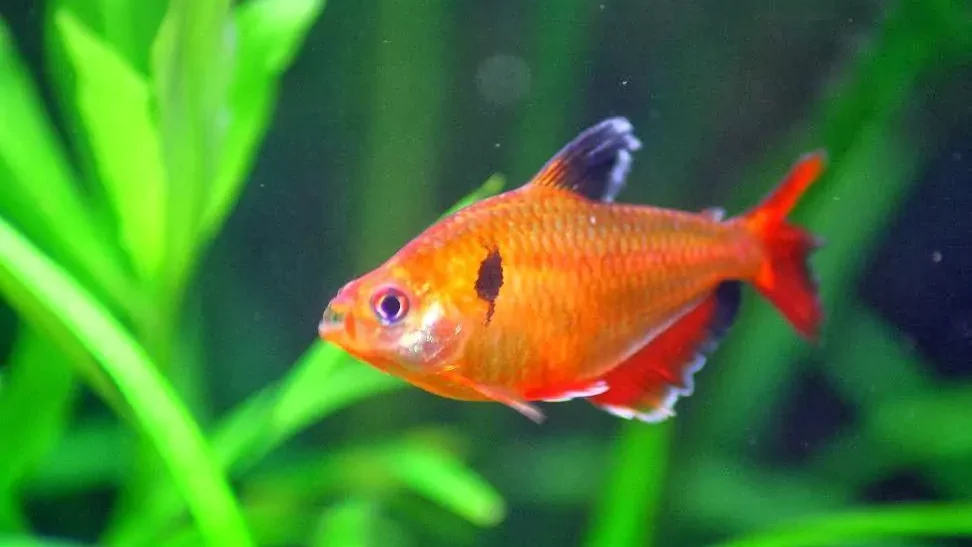
Common Goldfish (Carassius auratus)
- Environmental Needs: Goldfish have different temperature and water parameter requirements, making them incompatible with the tropical conditions preferred by Microrasbora Rubescens.
- Size Difference: The substantial size difference between goldfish and Red Dwarf Rasboras can lead to unintentional harm or stress for the smaller species.
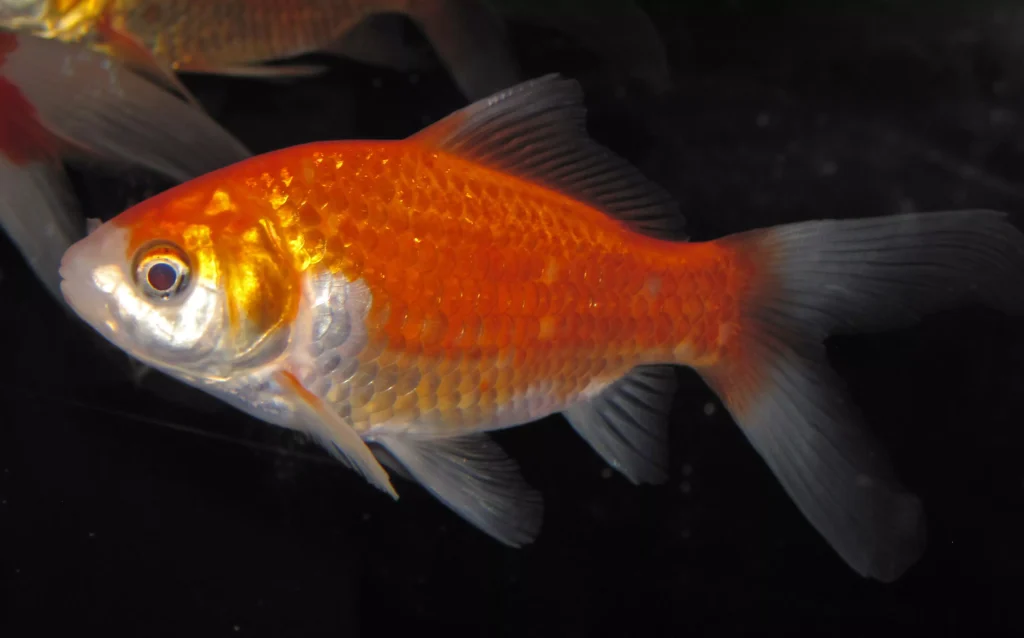
Choosing suitable tank mates ensures the well-being and thriving environment of Microrasbora Rubescens, making it crucial to avoid species that may disrupt the peaceful cohabitation within the aquarium.
Observing and Monitoring Tank Dynamics
Establishing a successful community aquarium with Microrasbora Rubescens involves vigilant observation and proactive measures to ensure the well-being of all inhabitants. Here’s a guide on how to monitor and manage tank dynamics effectively.
Signs of Compatibility or Conflict
- Peaceful Schooling: Observe Microrasbora Rubescens engaging in natural schooling behavior with compatible tank mates, creating a visually appealing and cohesive display.
- Healthy Feeding: Compatible species should exhibit healthy feeding patterns without competition or aggression during mealtime.
- Color Expression: Notice vibrant and well-colored appearances in both Microrasbora Rubescens and its tank mates, indicating a positive and stress-free environment.
- Minimal Aggression: No signs of fin nipping, chasing, or aggressive behaviors should be present among the tank inhabitants.
Adjusting Tank Conditions if Necessary
- Separation Tactics: If conflict arises, consider providing hiding spots or additional vegetation to create visual barriers, reducing direct interactions between conflicting species.
- Review Water Parameters: Regularly test and adjust water parameters to ensure they align with the preferences of both Microrasbora Rubescens and its tank mates.
- Evaluate Tank Size: If aggression persists, consider upgrading to a larger tank to provide more space and minimize territorial disputes.
- Species Rehoming: In extreme cases of aggression, it may be necessary to relocate incompatible species to alternative aquariums to ensure the overall well-being of the community.
Vigilance and prompt action based on observations are key to maintaining a thriving community aquarium. By staying attuned to the dynamics of the tank, aquarists can proactively address any issues that may arise, fostering a harmonious and visually stunning aquatic environment.
Conclusion
In conclusion, creating a thriving aquarium community centered around Microrasbora Rubescens requires careful consideration and thoughtful decision-making. Let’s recap the key points discussed, emphasize the importance of responsible fishkeeping, and encourage further research in the pursuit of aquatic excellence.
Recap of Key Points
- Microrasbora Rubescens Traits: We delved into the petite stature and vibrant coloration of Microrasbora Rubescens, highlighting its distinct physical features and peaceful behavioral traits.
- Ideal Tank Setup: The discussion covered the ideal tank size, water parameters, and recommended decor for creating a suitable habitat for Red Dwarf Rasboras.
- Compatible and Incompatible Tank Mates: We explored the top 5 compatible species and those to avoid, ensuring a harmonious community that promotes the well-being of Microrasbora Rubescens.
Emphasis on Responsible Fishkeeping
Maintaining an aquarium is not just a hobby; it’s a commitment to the well-being of the aquatic life within. Responsible fishkeeping involves diligent observation, thoughtful decision-making, and a dedication to providing an environment that mirrors the natural conditions of the species.
Encouragement for Further Research
As the world of aquatics is ever-evolving, continuous learning is paramount. Encourage fellow enthusiasts to explore further resources, stay informed about new developments, and share their experiences with the community. The journey of fishkeeping is both rewarding and educational, offering endless opportunities for discovery.
In the spirit of responsible stewardship, let’s ensure that every aquatic habitat we create is a sanctuary where Microrasbora Rubescens and its companions can flourish, fostering a thriving community that captivates both the eye and the heart.
Additional Resources
For enthusiasts eager to delve deeper into the world of Microrasbora Rubescens and aquarium community dynamics, the following additional resources offer valuable insights and in-depth information.
Links to Reputable Forums for Further Information
- AquariumAdvice: Engage with a community of experienced aquarists and enthusiasts on the Aquarium Advice Forum. Pose questions, share experiences, and benefit from collective wisdom.
- Fishlore: Explore the Fishlore Community to connect with fellow fishkeepers, participate in discussions, and gain practical advice on maintaining a healthy and harmonious aquarium.
- ThePlantedTank: For those interested in creating lush planted environments for Microrasbora Rubescens, the Planted Tank Forum provides a platform for discussing aquascaping, plant care, and more.
Links to Relevant Books for Recommended Reading
- The Complete Idiot’s Guide to Freshwater Aquariums by Mike Wickham: This comprehensive guide covers essential aspects of freshwater aquarium care, making it a valuable resource for both beginners and experienced hobbyists.
- Aquarium Plants by Christel Kasselmann: Explore the world of aquarium plants with this authoritative guide by Christel Kasselmann, offering insights into plant species that complement Microrasbora Rubescens.
- The Simple Guide to Freshwater Aquariums by David E. Boruchowitz: Designed for both novices and seasoned aquarists, this guide provides practical advice on setting up and maintaining freshwater aquariums.
By exploring these forums and books, aquarists can deepen their understanding of Microrasbora Rubescens, gather expert insights, and stay updated on the latest developments in the world of aquarium keeping.
Frequently Asked Questions (FAQs)
1. Can Microrasbora Rubescens be kept with other small fish in a community tank?
Yes, Microrasbora Rubescens is well-suited for community tanks with other small, peaceful fish. Compatible species like Neon Tetras and Dwarf Corydoras can create a harmonious and visually stunning aquarium environment.
2. What are potential signs of compatibility or conflict between Microrasbora Rubescens and tank mates?
Signs of compatibility include peaceful schooling, healthy feeding patterns, and vibrant color expression. Conversely, aggression, fin nipping, or visible stress in any species may indicate conflict.
3. Are there specific bottom-dwelling fish that coexist well with Microrasbora Rubescens?
Yes, small and non-aggressive bottom-dwelling species like Dwarf Corydoras and Otocinclus Catfish are suitable companions for Microrasbora Rubescens, contributing to a well-balanced aquarium community.
4. Can Microrasbora Rubescens be kept with shrimp in the same tank?
Indeed, Microrasbora Rubescens can coexist peacefully with shrimp, particularly smaller species like Cherry Shrimp. Shrimp not only add visual interest but also contribute to algae control in the aquarium.
5. How do I address aggression or conflict among tank mates involving Microrasbora Rubescens?
If aggression occurs, consider providing hiding spots, adjusting tank conditions, or, in extreme cases, separating conflicting species. Regular monitoring and proactive measures help maintain a serene and thriving community.


